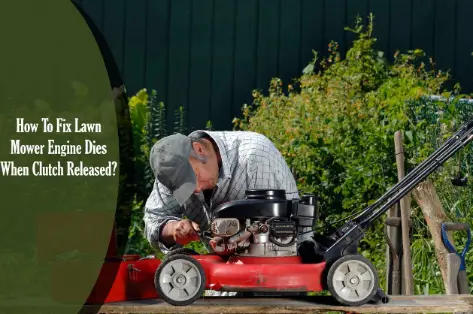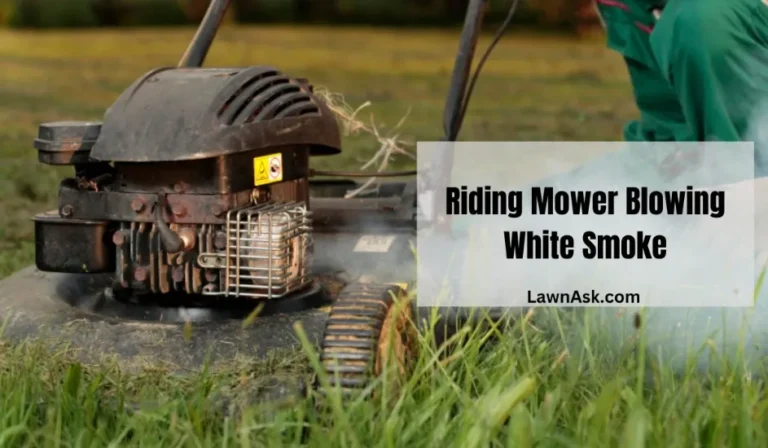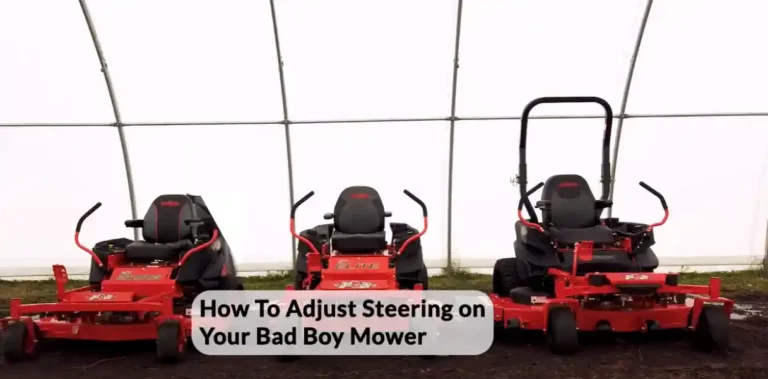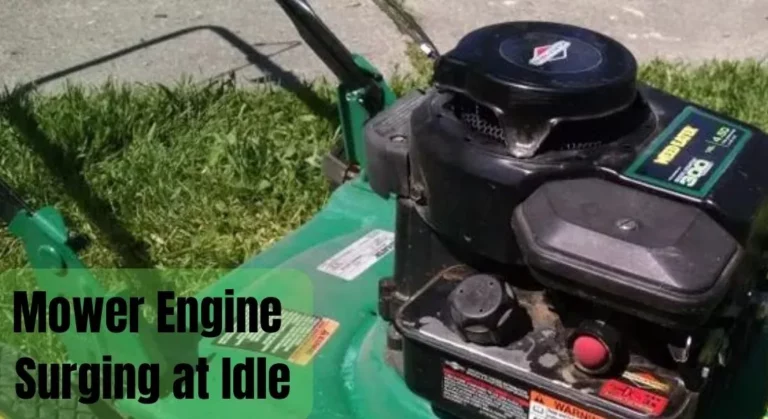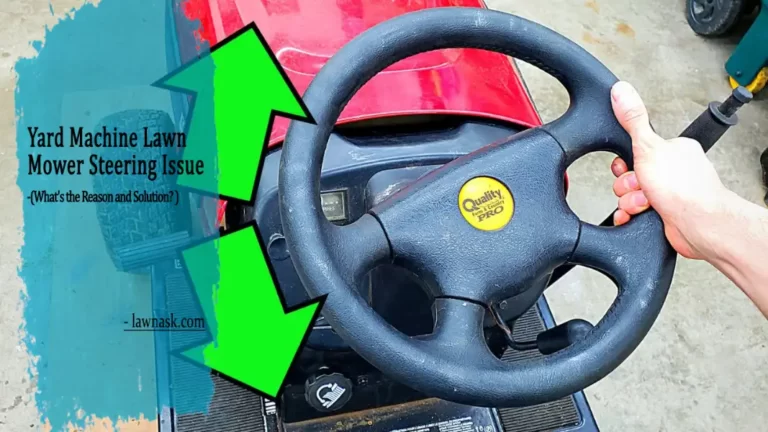Briggs and Stratton Engine Popping? 5 Reasons and Fixes
Occasionally, Briggs and Stratton mower users get startled by sudden loud engine popping noises. So, what does this Engine Popping indicate?
It indicates that your engine is either Backfiring or Afterfiring. So, how to resolve it?
Diagnose the fuel status, pressure, engine combustion system, air filter, carburetor, ignition coil, flywheel & valve clearance thoroughly to take necessary actions.
Continue reading the following article to learn why Briggs and Stratton engine popping noise occurs and how to fix it.

What Is Briggs and Stratton Engine Backfiring?
When the combustion explosion originates outside of the combustion chamber, where it should not be happening, it means the engine is backfiring.
Especially if the popping noise comes from the carburetor and air filter while your mower is still running or shutting off.
What Is Briggs & Stratton Engine After firing?
If you notice that the same popping sound is coming from the exhaust compartment, it means the engine is after firing.
What Causes Your Briggs and Stratton Engine Popping Noises?
The most common reasons behind your Briggs & Stratton engine making popping noise are:
- Stale Fuel/not enough Fuel in the tank/incorrect Air to Fuel ratio/low Fuel Pressure
- Any potential issues in the Carburetor
- Broken/damaged Spark Plug or faulty Ignition Coil
- Issues in Valve Clearance
- Sheared Flywheel Key
Check & Fix Your Briggs and Stratton Engine Popping Issue
The best way to resolve such an irritating situation is to inspect each potential area to perform the required service.
So, follow the instructions thoroughly_
1. Check the Fuel
The first thing you need to check is, whether the engine has started running too lean, where the air ratio is much higher compared to fuel, or have old gasoline sitting in the tank for a long period.
Even a lack of fuel, an incorrect fuel mixture, or using fuel that contains a higher amount of Alcohol can gradually drive the engine to backfire or afterfire.
Therefore, use the correct fuel type specifically recommended.
If you see low fuel pressure while inspecting, increase the speed and fuel supply to rectify your mower’s fuel pressure.
Check the condition of the fuel pump and fuel filter. If needed replace them.
Related Post: Briggs and Stratton Oil Leak Problems! How to Solve Them?
2. Look for Any Issues in the Carburetor
The engine tends to backfire due to any potential Carburetor issues, such as a clogged jet and emulsion tube, dirty air filter, loose-fitting, missing gasket, clogged fuel filter, or muffler screen.
To troubleshoot your Briggs & Stratton Carburetor, you will need:
| Tools |
| ½ inch & 3/8 Socket |
| A number 2 Phillip & Slotted Screwdrivers |
| Carburetor Cleaner |
| Required replacement parts |
Take notes or photos while disassembling the parts so that you can reassemble the parts accurately in place.
- Air Filter
Use the slotted screwdriver to remove the mounting screw of the air filter cover and check whether the air filter looks good or nasty and gummed up.

If the Air Filter looks dirty, either clean or replace it.

You will notice a little gasket over there, so peel that off carefully.

Use a 3/8 socket to remove this bolt

and a 1/2 socket to take off this one.
Then, pull the carburetor and get the throttle lever off of the throttle linkage.
Next, pull off the crankcase breather vent tube and if it looks cracked, replace it.
Pull the carburetor right out of the fuel tank.
- Diaphragm and Gasket

After pulling out the Carburetor, you will see the Diaphragm and gasket. If that looks bad, replace it.
- Clogged Jets
If you see that the brass jet has clogged up the main jet, remove the screen to get access to the main jet.

If the main jet looks clogged, carefully take it out.
Either clean the jet with a carb cleaner or clean the jet with a bread tie. You can even clean the main jet with Traditional wire.
Then spray and douse the Carburetor to clean it properly. If the carburetor is severely damaged, replace the Carburetor.
- O-rings
Check if the O-rings in the carburetor are in a compromised state, so inspect and if needed replace the O-rings.
Re-install and put everything back in accordingly.
3. Inspect the Spark Plug & Ignition Coil
Check the spark plug and ignition coil to confirm they are in good working condition. Because if either of them turns bad, it will eventually drive you to encounter similar popping issues.
First, ensure the engine has cooled off to disconnect the wire and boot from the spark plug.
Use a wrench or socket to remove the plug.

If the spark plug looks worn out, replace it.
Remove the starter rope while keeping the wire and boot disconnected from the spark plug.
Unscrew the mounting screws of the engine cover and remove the cover. Similarly, remove the gas tank and get access to the dipstick tub.
Remove the dipstick mounting screws and unscrew the retaining screws to release the old ignition coil.
If looks bad, bring a new ignition coil and prepare it to install.
4. Check Valve Clearance
The engine can also pop or backfire if there’s an issue with the Valve adjustment, such as the valve not completely closing & causing excess engine heat.
In that case, it requires prior adjustment to get optimum valve clearance.
Removing the spark plug and valve cover.
Find the Top dead center or TDC and as soon you get the compression stroke, adjust the valve.
Then tighten the Lock Wrench to finish the adjustment.
5. Check the Flywheel Key
If the cutting blade of your mower accidentally hits any solid or huge object, all the flywheel energy immediately shifts to the Flywheel key.
As a result, the flywheel key becomes sheared and causes similar engine popping or not running issues. If you fail to replace the key promptly, it can cause further serious damage to your mower.
Therefore, get access to the flywheel and inspect the condition. If it really looks sheared, replace the flywheel key.
Related Post: Understanding 6 Key Differences Between Toro Engines Vs Briggs and Stratton!
What Causes Small Engines to Backfire?
The most common reasons are:
- If you lower the engine speed too quickly.
- Using stale fuel or Gas with higher mixtures of Alcohol.
- Too lean Carburetor adjustment, loose fitting, or missing gasket.
- Clogged Muffler or incorrect construction of the Muffler.
- Too high engine temperatures than usual.
- Other sensitive issues occurred in the Carb system.
How To Fix Small Engine Backfire?
You should either_
- Stop increasing the engine speed too fast and slowly try to lower the speed.
- Select the fuel based on standard small engine fuel recommendations that contain low or zero alcohol.
- Inspect the whole Carburetor assembly thoroughly and service the faulty parts as required.
- Increase the air volume to lower engine temperature.
Frequently Asked Questions (FAQs)
Why do Briggs and Stratton backfire through exhaust?
Briggs & Stratton mostly backfires through the exhaust as the engine runs rich due to incorrect air-fuel mixture slowing down the combustion process.
Why does a lawn mower make popping noises when trying to start?
Due to too quick or slow engine decelerating, using stale or the wrong Fuel type, cropped flywheel key, a damaged spark plug, and if the engine is running too rich or too lean.
Is it possible to turn the Briggs & Stratton flywheel by hand?
Yes.
Related Posts:

